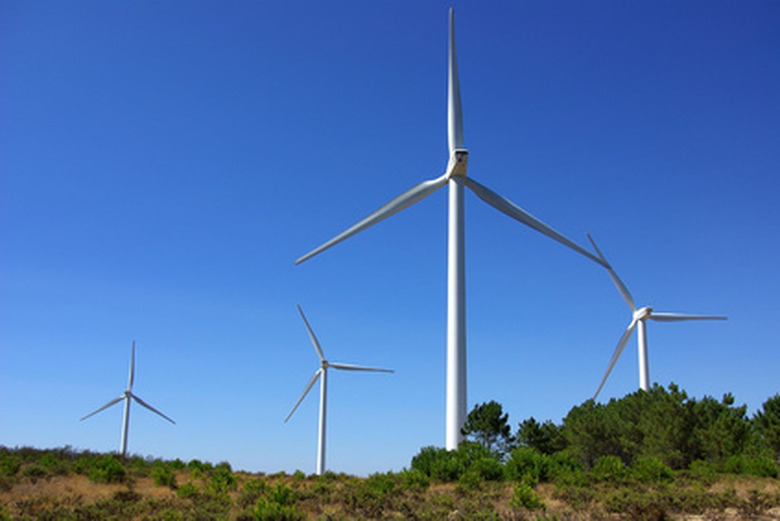How To Build Your Own Wind Generator System
A wind generator system can be built at home, mostly using commonly available household items, for the generation of electricity. Wind generators work by using the power of the wind to turn blades; this circular motion is used to rotate a motor, which in turn causes it to generate electricity.
A motor and a battery will need to be specially bought for this wind generator, as these are very complicated to make.
Step 1
Make the blades of the wind generator system. These will catch the wind, causing the blades to rotate, so turning the motor and generating electricity.
The blades can be simply made using a length of PVC tubing, such as those used for guttering. According to "your Green Dream", the PVC tubing should be 20% as wide as it is long to ensure that it has adequate strength when in the wind. The length of the blades depends on the overall size of the wind generator system. For a basic home wind generator system, approximately 18 to 20 inches in length is a good size.
Cut this tube into four equal pieces lengthways and then shape each of these quarters into a blade, by cutting them in half diagonally to form long triangles.
Step 2
Attach these blades to a hub, which can be made of a cog or small round piece of metal. Ensure that the hole in the middle of this hub will fit onto the motor.
The blades can be bolted or screwed onto the hub, at equal distances around its circumference. The hole in the middle of the hub should be slotted onto the motor, so that when the wind moves the blades around, the attachment on the motor is spun and electricity is generated.
Step 3
Attach the motor to one end of a 2x4, approximately 1 yard in length. Cover the motor with some plastic sheeting to protect it from the weather.
Step 4
Attach a rectangular piece of metal or rigid plastic to the other end of the 2x4; this will act as the tail. The tail will become caught in the wind and so maneuver the blades of the wind generator in the most efficient direction to produce the most power.
Step 5
Drill a hole just behind the motor for the wires to run through. Underneath this hole, attach a pipe bracket. Into this pipe bracket and also below the hole, slide in a slightly smaller pipe. This pipe needs to be able to move freely within the bracket so that the blades, motor and tail of the wind generator can swivel towards the wind. Run wires from the motor down through this pipe.
Step 6
Fix the wind generator system to a sturdy base, such as a large piece of wood. The wind generator will need to remain upright in strong winds and other weather, so this base can be attached to the ground or other object for extra support.
Step 7
Run the wires from the motor at the top of the wind generator system to a dry place, for example a shed. Make sure that the wires are covered at all points from the weather and animals which may chew them.
Step 8
Connect the wires running from the motor to the battery. This will enable the storage of the electricity generated, for later use. More than one battery can be used with this wind generator system; simply swap the batteries over when one is full or is being used to power other appliances.
Things Needed
- PVC pipe
- Motor
- 2x4 piece of wood, approximately 1 yard long
- Plastic sheeting
- Pipe bracket
- Pipe
- Large piece of wood
- Battery
Warning
Always take care when dealing with electrical components such as motors and batteries. Always read the manufacturers' guidelines for safe use..
Cite This Article
MLA
Smith, Jess. "How To Build Your Own Wind Generator System" sciencing.com, https://www.sciencing.com/build-own-wind-generator-system-7504611/. 24 April 2017.
APA
Smith, Jess. (2017, April 24). How To Build Your Own Wind Generator System. sciencing.com. Retrieved from https://www.sciencing.com/build-own-wind-generator-system-7504611/
Chicago
Smith, Jess. How To Build Your Own Wind Generator System last modified March 24, 2022. https://www.sciencing.com/build-own-wind-generator-system-7504611/
